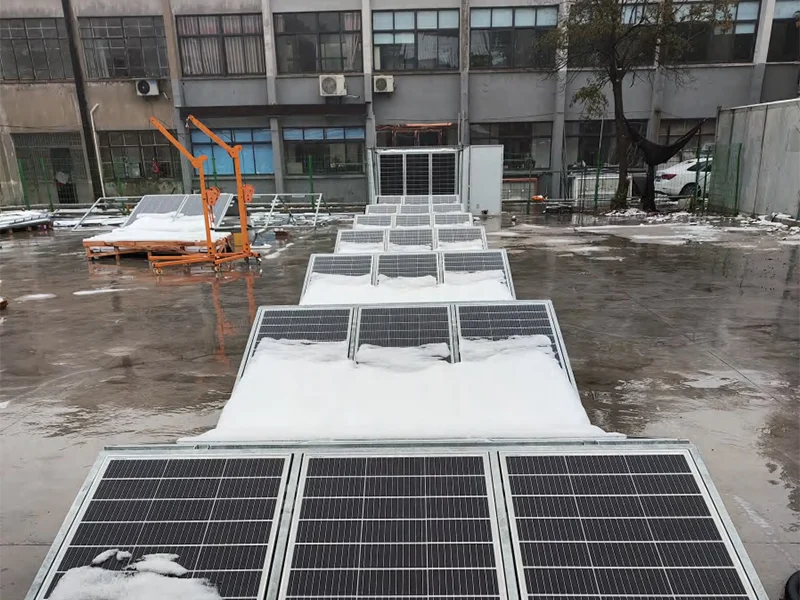Project duration: January 2024
Location: A community in Michigan, USA (120 households)
Project Product: 10 LZY-MSC1 Mobile Solar Containers
When the Grid Goes Down: A Community in Crisis
A bitter January 2024 cold snap witnessed a ferocious ice storm ravaging a residential community in northern Michigan. Within hours, the heavy snowfall and breaking tree branches took down the power lines, leaving 120 homes without light.
Brownouts were nothing new to this community. Over the past several years, storms had caused 10+ outages annually, some lasting days. The local utility company, overwhelmed by the increasing frequency of severe weather, was hardly even responding and restoring electricity. Homeowners had had enough of the constant uncertainty—and this time, they were prepared.
A Community-Supported Solution: Mobile Solar Containers
Weeks before the hurricane, the neighborhood association had invested in 10 LZY-MSC1 mobile solar PV systems—a decision that would soon be worth its weight in gold. Unlike traditional backup systems, which relied on diesel or natural gas, these compact, foldable solar power units could be kept ready for instant storage at times of dormancy and rapid deployment at times of calamity.
Each of the LZY-MSC1 mobile solar containers accommodated:
✅ High-efficiency solar panels that could generate 15 kW per unit
✅ 50 kWh lithium-ion battery to store excess power
✅ Intelligent energy distribution systems to direct power effectively
When the power failed, local volunteers were immediately in action. In just an hour, all 10 of the solar containers were fully out in the neighborhood, strategically placed to provide access to power to every house.
Maintaining Power to 120 Homes Throughout the 48-Hour Blackout
As the mobile solar power systems moved around, the community was able to provide daily electricity needs for two days.
Because the system was made up of modules, houses from different parts of the neighborhood could exchange energy dynamically, with no household ever having to do without electricity. Unlike the typical generators that must be constantly refilled and make too much noise, the solar containers were powered silently and emission-free.
The Cost & Savings Breakdown
For many years, diesel generators were used by most of the residents as a backup. However, fuel cost and maintenance fees made them an expensive, inefficient solution. With solar power, the community saved immediately.
Through their failure to run on diesel fuel, the village avoided $6,000 costs for each blackout and reduced greenhouse gases by 12 metric tons—equivalent to removing 10 cars from the road for one year.
More Than an Emergency Standby
In addition to compensating themselves within the storm context, the advantage of the solar containers in portable containers extended further than emergencies alone. On typical days, on their assigned places in storage space, the units remained folded, using very limited space.
But on sunny days, they were occasionally utilized to generate power off-grid so homeowners could cut down on electricity payments. During the course of one year, the system saved 30% of the overall energy bill for the community and constituted a long-term investment in resilience and sustainability.
A Model for Other Communities
This Michigan neighborhood is now the benchmark for energy resilience. Their initial investment in portable solar power not only powered their home during a blackout but also saved them fuel costs, reduced emissions, and boosted local self-reliance.
With more frequent severe weather events becoming the new norm, other residential neighborhoods are now thinking the same. Could your neighborhood be next?

